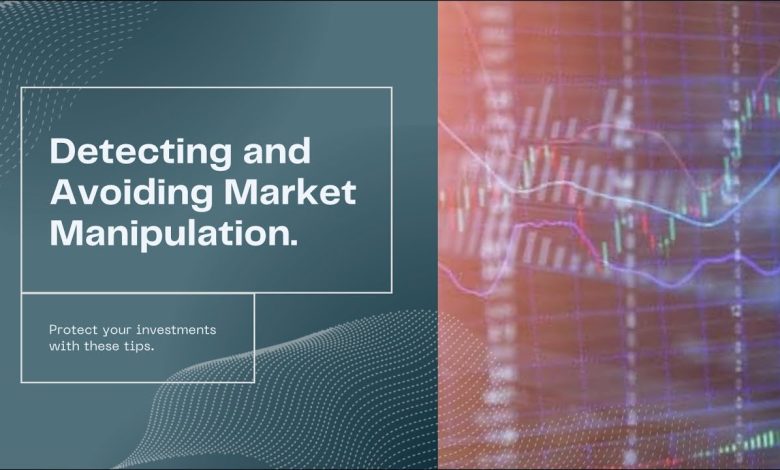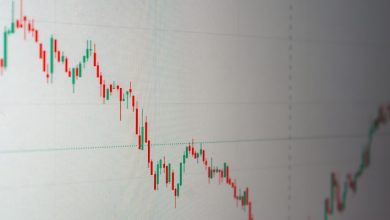How to Protect Your Investments from Market Manipulation

- Understanding market manipulation and its impact on investments
- Recognizing common tactics used in market manipulation
- Strategies for identifying potential market manipulation in your investments
- Diversification as a key defense against market manipulation
- The role of regulations in protecting investors from market manipulation
- Tips for safeguarding your investments in a volatile market
Understanding market manipulation and its impact on investments
Market manipulation is a practice that involves artificially inflating or deflating the price of a security or a market to benefit certain individuals or entities. This can have a significant impact on investments, as it can create a false sense of value or volatility in the market. Understanding how market manipulation works is crucial for investors to protect their investments from potential harm.
One common form of market manipulation is known as “pump and dump,” where individuals or groups spread false information to drive up the price of a stock, only to sell off their shares at a profit once the price has increased. This can lead to unsuspecting investors buying into a stock at an inflated price, only to see the value plummet once the manipulation is revealed.
Another form of market manipulation is “spoofing,” where traders place large buy or sell orders with no intention of executing them, in order to create a false impression of demand or supply in the market. This can trick other investors into making trades based on false information, leading to losses when the market corrects itself.
It is essential for investors to be aware of these tactics and to conduct thorough research before making investment decisions. By staying informed and being vigilant, investors can protect themselves from falling victim to market manipulation and safeguard their investments from potential harm.
Recognizing common tactics used in market manipulation
Market manipulation can take many forms, and it’s essential to be able to recognize common tactics used by manipulators. One tactic is **pump and dump**, where manipulators artificially inflate the price of a stock through false or misleading statements, then sell off their shares at a profit once the price has risen. Another tactic is **spoofing**, where manipulators place large buy or sell orders with no intention of executing them, in order to create a false impression of demand or supply and move the price in their favor.
**Front running** is another common tactic, where manipulators place orders based on non-public information they have access to, ahead of other traders. This gives them an unfair advantage and can manipulate the market. **Churning** is a tactic where manipulators engage in excessive buying and selling of securities in order to generate commissions for themselves, without regard for the investor’s best interests.
**Painting the tape** is a tactic where manipulators engage in coordinated buying and selling of a security to create the appearance of activity and drive up the price. This can lure unsuspecting investors into the market, only to be left holding overvalued securities when the manipulators exit their positions. By being aware of these common tactics used in market manipulation, investors can better protect their investments and make more informed decisions.
Strategies for identifying potential market manipulation in your investments
When it comes to protecting your investments from potential market manipulation, it is crucial to be vigilant and proactive. By implementing strategies to identify signs of manipulation, you can safeguard your investments and minimize risks. Here are some key strategies to help you detect and prevent market manipulation:
- Monitor trading volumes: Keep a close eye on the trading volumes of the stocks or assets in which you have invested. Unusually high or low trading volumes could be a red flag for market manipulation.
- Watch for sudden price movements: Be wary of sudden and unexplained price movements in the market. These fluctuations could be a result of manipulation by large investors or institutions.
- Stay informed about market news: Stay up to date with the latest market news and developments. Be aware of any rumors or news that could potentially impact the market and your investments.
- Use technical analysis: Utilize technical analysis tools to identify patterns and trends in the market. Look for any anomalies or irregularities that could indicate manipulation.
- Consult with financial experts: Seek advice from financial experts or advisors who can provide insights and guidance on market trends and potential manipulation.
By being proactive and observant, you can protect your investments from market manipulation and make informed decisions to safeguard your financial future.
Diversification as a key defense against market manipulation
Diversification is a crucial strategy to protect your investments from market manipulation. By spreading your investments across different asset classes, industries, and geographical regions, you can reduce the risk of being negatively impacted by the actions of a single entity or group attempting to manipulate the market for their own gain.
When you diversify your portfolio, you are essentially creating a buffer against market manipulation. If one sector or asset class is being targeted for manipulation, the other parts of your portfolio can help offset any potential losses. This can help you maintain a more stable and resilient investment portfolio in the face of market manipulation attempts.
Furthermore, diversification can also help you take advantage of opportunities in different markets. By investing in a variety of assets, you can benefit from the growth of different sectors or regions, even if others are experiencing manipulation. This can help you achieve more consistent returns over the long term.
The role of regulations in protecting investors from market manipulation
Regulations play a crucial role in safeguarding investors from falling victim to market manipulation. These rules and guidelines are put in place to ensure fair and transparent trading practices, thereby protecting investors from fraudulent activities that can distort market prices and deceive unsuspecting individuals.
By enforcing regulations, regulatory bodies can monitor and investigate suspicious activities in the market, such as insider trading, pump and dump schemes, and false rumors spread to manipulate stock prices. These measures help maintain market integrity and investor confidence, ultimately reducing the risk of financial losses due to manipulative practices.
Investors should familiarize themselves with the regulations governing the financial markets in which they participate. Understanding these rules can help investors identify potential red flags and avoid falling prey to manipulative tactics. Additionally, staying informed about regulatory updates and changes can further protect investors from emerging threats in the market.
Tips for safeguarding your investments in a volatile market
When dealing with a volatile market, it is crucial to take steps to safeguard your investments. Here are some tips to help protect your assets:
- **Diversify** your portfolio to spread risk across different investments.
- **Monitor** your investments regularly to stay informed about market trends.
- **Set** stop-loss orders to automatically sell investments if they reach a certain price.
- **Stay** updated on current events and economic news that could impact the market.
- **Consider** investing in stable assets like bonds or real estate to balance out risk.
By following these tips, you can help mitigate the impact of market manipulation and protect your investments from sudden downturns.



